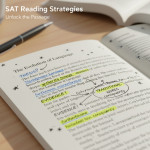Why This Comparison Matters — and Why You Should Care
If you’re standing at the crossroads of test day decisions, you’re not alone. The world of standardized testing can feel like a maze: SAT? ACT? AP? IB? PSAT? Everyone tells you different things. The truth is simpler: each test has a purpose, a style, and a strategy that will play to different strengths. Understanding those differences helps you study smarter, avoid wasted hours, and pick the path that gives you the best shot at your goals.
A quick snapshot: what these tests are for
Before we dive deep, here’s a practical way to think about the most common exams you’ll see in high school:
- SAT — a college-admissions test focused on evidence-based reading, writing, and math.
- ACT — another admissions exam with a slightly different structure and a dedicated Science Reasoning section.
- AP exams — subject exams that test mastery of college-level high school courses; often used for college credit.
- IB (International Baccalaureate) exams — part of a rigorous curriculum focusing on critical thinking, breadth, and depth across subjects.
- PSAT/NMSQT — a preliminary test that helps you practice for the SAT and qualifies juniors for National Merit recognition.
At-a-glance comparison table
| Test | Primary purpose | Timing | Scoring | Calculator policy |
|---|---|---|---|---|
| SAT | College admissions | About 2.5–3 hours | 400–1600 composite | Mostly allowed; some sections restrict |
| ACT | College admissions | About 3 hours (plus optional writing) | 1–36 composite | Allowed on all sections |
| AP | College credit/placement | 2–3 hours depending on subject | 1–5 score scale | Varies by exam |
| IB | Diploma/curriculum mastery | Varies; multiple papers per subject | 1–7 grade scale | Varies by subject |
| PSAT/NMSQT | Practice + National Merit entry | About 2 hours | 320–1520 composite (score reporting similar to SAT) | Similar to SAT rules |
What the SAT actually measures
Let’s zoom in on the SAT because it’s the test you’re preparing for. The SAT is built to gauge two main domains: Evidence-Based Reading & Writing (EBRW) and Math. Across these sections, the test looks for:
- reading comprehension and use of textual evidence;
- clear, concise written expression and grammar in context;
- mathematical reasoning across algebra, some geometry, data analysis, and problem-solving;
- efficient application of strategies under timed conditions.
It’s a mixture of content knowledge and problem-solving under pressure. Recent iterations also emphasize real-world contexts: passages might come from history, science, or social studies, and math problems often include data interpretation or multi-step reasoning.
How the SAT is structured and scored
Traditionally, the SAT is scored on a 400–1600 scale combining Evidence-Based Reading and Writing (200–800) and Math (200–800). While test formats evolve, the core idea remains: you want accuracy and pacing. Unlike some exams that penalize guesswork, modern SAT scoring encourages strategic guessing because raw scores are converted to scaled scores by equating processes that account for test difficulty.
SAT vs ACT: the most frequent comparison
If you’ve asked anyone about college testing, the SAT vs ACT debate comes up first. They’re both accepted broadly by U.S. colleges, but the tests are different beasts.
Key structural differences
- Timing and pace — ACT tends to have more questions in less time. If you work quickly and can keep accuracy under pressure, ACT’s faster pace can be an advantage. The SAT usually gives a bit more time per question, favoring careful problem solvers.
- Content emphasis — ACT includes a Science Reasoning section that tests interpretation, analysis, and evaluation more than rote science facts. The SAT integrates scientific and history contexts into reading passages rather than a separate science test.
- Math style — The ACT math section covers a slightly broader range of topics (trigonometry appears more often) and allows a calculator throughout. SAT math splits calculator and no-calculator portions and emphasizes algebra, data analysis, and problem-solving.
- Question style — SAT questions often focus on multi-step reasoning and deeper evidence-based justifications, while ACT items can be more straightforward but faster paced.
Which one should you take?
Consider your strengths: if you read carefully, prefer steady pacing, and like multi-step reasoning problems, the SAT may suit you. If you think quickly, perform well under tight timing, and are comfortable with charts, tables, and science passages, give ACT prep a shot. Many students take practice tests for both and choose based on actual scores. Sparkl’s tailored study plans and 1-on-1 guidance can make that diagnostic process faster and clearer—an expert tutor can pinpoint whether SAT or ACT strategies fit your natural style.
SAT vs AP and IB: different goals, different rewards
AP and IB aren’t primarily admissions tests. They’re curriculum-based exams intended to measure how well you’ve mastered a college-level class (AP) or a full international curriculum (IB). That difference in purpose shapes everything — content depth, question type, and utility.
How AP and IB differ from the SAT
- Curriculum alignment — AP and IB questions are rooted in specific course content. If you’ve taken AP Biology or IB History, you’re being tested on what you studied in those classes.
- Depth vs breadth — AP and IB often require deeper analytical writing or in-depth subject knowledge, whereas the SAT tests transferable skills like reading for evidence and quantitative reasoning.
- College credit — Strong AP or IB scores can earn you college credit or advanced placement, reducing tuition or allowing earlier enrollment in advanced courses. SAT scores are used primarily in the admissions decision.
So if your goal is to show mastery of a subject or earn credit, AP/IB are the way to go. If you want to present standardized evidence of college readiness across many applicants, focus on the SAT.
SAT vs PSAT/NMSQT: practice with purpose
The PSAT is a rehearsal for the SAT and a gateway to National Merit recognition for juniors. Think of it as a low-stakes diagnostic with a scholarship perk.
- Structure and content mirror the SAT closely, so PSAT scores help you see where to focus before you take the full SAT.
- Only juniors are eligible for National Merit, so do take the PSAT seriously that year if scholarship recognition matters to you.
Use your PSAT score to build a targeted study plan. This is where personalized tutoring really shines: a Sparkl tutor can analyze your PSAT report, highlight weak areas, and craft an efficient plan to raise your SAT score in the months ahead.
Practical examples: how a problem might look different
Seeing real examples helps. Below are two short problems that illustrate how the SAT and ACT might approach similar content differently.
Math example — SAT style (emphasis on reasoning)
Question: A city park has a rectangular flower bed that measures 3x meters by (x + 2) meters. If the area of the bed is 28 square meters, what is x? Show your reasoning approach.
Approach: Set up equation (3x)(x + 2) = 28 → 3x^2 + 6x – 28 = 0. Solve quadratic: Use quadratic formula or factor if possible. Discriminant: 6^2 – 4*3*(-28) = 36 + 336 = 372. Square root of 372 is not a neat integer; check algebra — maybe misread units? Another option: try integer factors of 28 and see if they fit form 3x and x+2. If x = 2, lengths 6 and 4 gives area 24; if x = 3, lengths 9 and 5 gives 45 — not right. Correct algebra yields x = (-6 ± sqrt(372))/6 → positive root approximately 1.54. For SAT, a well-reasoned numeric approximation is acceptable if the question is calculator-allowed.
Reading example — ACT style (pace and information processing)
Question: You read a short passage that argues public parks improve neighborhood wellbeing. Which sentence best supports the author’s claim? Look for the sentence that directly links parks to measurable public outcomes.
Approach: ACT reading questions often expect quick identification of evidence in the passage. Skim each paragraph for topic sentences, then check answer choices for direct connections rather than implied ones. The fastest route is efficient skimming plus elimination.
Choosing which test to prioritize: a decision checklist
Here’s a simple decision-making checklist you can use:
- Check college requirements — what do your target schools prefer or require?
- Take practice tests for SAT and ACT — which one gives you a higher raw score after minimal prep?
- Consider your strengths — are you fast under pressure (ACT)? Do you prefer careful step-by-step reasoning (SAT)?
- Think about timing — AP/IB align with coursework; PSAT is a practice run with scholarship potential; SAT/ACT tests are flexible across the year.
- Think strategically — sometimes doing both SAT and ACT can increase your options, especially if you can target test dates across the year.
Study strategies tailored to each test
Study routines differ depending on which test you choose. Here are focused strategies that work.
SAT-focused strategies
- Build evidence-based reading habits: annotate passages, mark where evidence is shown, and practice deriving answers from text rather than memory or inference alone.
- Master the no-calculator math techniques: mental arithmetic, algebraic rearrangement, and recognizing shortcut patterns.
- Practice pacing on multi-step problems; timed sections still reward careful thinkers.
ACT-focused strategies
- Develop faster processing: practice whole-section timing to maintain accuracy under speed pressure.
- Use science section habits: interpret graphs and experiments quickly, and focus on what the passage actually says over outside knowledge.
- Get comfortable with calculator usage throughout math sections; learn which functions speed up common problems.
AP/IB strategies
- Align study with your course material: review syllabus topics and past exam formats often used in class.
- Practice long-form responses and timed essays where required; depth and clarity matter.
- Use problem sets to build mastery rather than just familiarity.
How targeted tutoring (and smart tools) can change the game
Everyone says “practice,” but effective practice is targeted. This is where personalized tutoring and intelligent insights matter. A 1-on-1 tutor can help you in specific ways:
- Diagnose tricky weaknesses quickly (e.g., specific math subtopics, types of reading questions).
- Create a tailored study plan that prioritizes high-return activities for your timeline.
- Give expert feedback on timing, pacing, and test-day strategies.
Sparkl’s personalized tutoring brings those benefits together: individual sessions, tailored study plans, and expert tutors who can adjust instruction to your pace. Add AI-driven insights for targeted practice recommendations, and you get a hybrid approach that helps you improve faster with fewer wasted hours. That doesn’t guarantee a magic jump, but it reliably moves practice from random to strategic.
Test day: logistics and mindset
Knowing technicalities is as important as the content. On test day, remember these practical checks:
- Bring permitted identification and materials (calculator, pencils, snacks as allowed).
- Know the calculator policy for your chosen test — some SAT sections restrict calculators, while the ACT allows them throughout.
- Rest well the night before. Timed concentration is a muscle; tired brains perform poorly.
- Use time-management strategies you practiced: flagging questions, educated guessing, and section-level pacing.
Mindset matters too. Think of the exam as a measure you can influence—through practice and strategy—rather than an immutable judgment. Small improvements in timing, a few missed concepts corrected in tutoring, or a refined guess strategy can add meaningful points to your score.
Real-world examples: student stories
Consider two hypothetical students:
- Jamie, a careful reader who performs well on essays and structured problems, struggled with speed. With targeted SAT prep, Jamie improved time management and raised their SAT score by focusing on evidence-based reading strategies and a few high-yield algebra topics.
- Riley, a fast problem-solver who was comfortable with charts and scientific reasoning, took an ACT-focused approach, practiced whole-section timing, and gained confidence on the science section, which led to a higher composite score.
Both students used personalized tutoring to pinpoint weak areas—one improved pacing, the other accuracy on particular question types. That’s the real advantage of tailored coaching: it amplifies your natural strengths while fixing the specific stumbling blocks that lose points.

Putting it together: a practical roadmap for the next 6 months
Here’s a simple, practical timeline for a student aiming to take the SAT (or choose between SAT and ACT) within six months.
- Month 1: Diagnostic — take a full-length SAT and ACT practice test to see where you stand. Identify weak areas. If you’re unsure which test fits, try both.
- Months 2–3: Foundation — shore up content gaps (algebra topics, grammar rules, reading strategies). Begin weekly full-length practice under timed conditions.
- Month 4: Targeted work — focus on recurring errors. Add 1-on-1 tutoring sessions for personalized correction and tailored drills.
- Month 5: Simulation — take multiple full-length, timed tests on realistic test days. Practice stamina, timing, and test-day routines.
- Month 6: Fine-tuning — focus on pacing, guessing strategies, and anxiety reduction. Review high-yield topics and ensure you have test-day logistics set.
Working with a tutor or a tailored program can compress this timeline. Sparkl’s expert tutors and AI-driven insights help you prioritize the highest-impact areas, so you spend your time improving score-driving skills rather than repeating low-value practice.
Final checklist: before you book your test
- Have you tried both SAT and ACT practice tests? Choose the one that fits your strengths.
- Are your weak areas identified and being actively addressed?
- Do you have a realistic schedule that includes full-length practice tests?
- Is your test-day plan ready (ID, materials, travel time)?
- Have you considered targeted tutoring to accelerate progress?
Conclusion — make the test work for you
The SAT and other standardized tests each serve different roles. The SAT and ACT are primarily admissions tools with different rhythms and question styles. AP and IB exams measure curriculum mastery and can earn you college credit. The PSAT is practice with scholarship upside. Choosing the right path is about matching test features to your skills, schedule, and college goals.
Most importantly, your preparation choices matter more than which test you pick. Smart, targeted preparation—especially when reinforced by personalized tutoring and data-driven recommendations—gives you the clearest path to improvement. That’s where you see the biggest gains: focused practice, tailored feedback, and consistent execution. Sparkl’s personalized tutoring—1-on-1 guidance, tailored study plans, expert tutors, and AI-driven insights—can help turn weeks of study into measurable progress.
Take a practice test, make a plan, and then refine that plan with honest feedback and targeted work. Tests are not obstacles; they’re opportunities to show what you can do. With the right strategy and support, you’ll be ready to make the test work for you.


















No Comments
Leave a comment Cancel